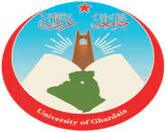Please use this identifier to cite or link to this item:
https://dspace.univ-ghardaia.edu.dz/xmlui/handle/123456789/10277Full metadata record
| DC Field | Value | Language |
|---|---|---|
| dc.contributor.author | BAGHBAGHA, Amel | - |
| dc.date.accessioned | 2025-11-18T07:57:47Z | - |
| dc.date.available | 2025-11-18T07:57:47Z | - |
| dc.date.issued | 2025 | - |
| dc.identifier.uri | https://dspace.univ-ghardaia.edu.dz/xmlui/handle/123456789/10277 | - |
| dc.description.abstract | An ethno-botanical survey of medicinal plants was conducted during the six months in the Ghardaïa region. The aim is to collect more information about medicinal plants (the most part used, preparing method, different categories of users), that are used by the population’s Ghardaïa. The work is get as inventory of medicinal plants used in traditional medicine for the treatment of kidney disorders. An ethno-botanical investigation was conducted among herbalists, traditional healers, botanists, ancestors…etc. This work was carried-out using 45 questionnaire forms, which included in the first part about the interviewer information as the age, gender, profession and the plants uses in the second part. The results shows that the interviewers are predominantly male (91%), with ages ranging from 20 to 80 years. Also, the majority of them consisted of traditional practitioners, accounting for 58%, followed by herbalists, representing approximately 38%. These two principal groups significantly contribute to the transmission and preservation of traditional knowledge. This study shows the fifty-five (55) species of medicinal plants belonging to twenty-two (22) botanical families, with the most represented families being Poacées (20%), Apiacées (13%), and Fabacées (9%). It was observed that some respondents mentioned several species, generally between two and three per person. However, the leaves are the most commonly used parts (33.85%) in the treatment of this affection. The majority of traditional remedies are prepared as infusions (50.91%) and decoctions (32.73%). These preparations are typically administered orally, mainly in the form of herbal teas. Furthermore, the frequently species are used in treatments kidney disorders are Hordeum vulgare L., Acacia senegal, Petroselinum crispum, and Paronychia argentea. | EN_en |
| dc.language.iso | fr | EN_en |
| dc.publisher | Faculté Science de la Nature et de la Vie et Sciences de la Terre - Université de Ghardaïa | EN_en |
| dc.subject | Enquête ethnobotanique, Plantes médicinales, problèmes rénaux, Ghardaïa. | EN_en |
| dc.subject | Ethnobotanical survey, Medicinal plants, Kidney problems, Ghardaïa. | EN_en |
| dc.title | Enquête Ethnobotanique des plantes médicinales utilisée pour le traitement des problèmes rénaux dans la wilaya de Ghardaïa | EN_en |
| dc.type | Thesis | EN_en |
| Appears in Collections: | Mémoires de Master | |
Files in This Item:
| File | Description | Size | Format | |
|---|---|---|---|---|
| mémoire finele corriger.pdf | 8.86 MB | Adobe PDF | View/Open |
Items in DSpace are protected by copyright, with all rights reserved, unless otherwise indicated.
